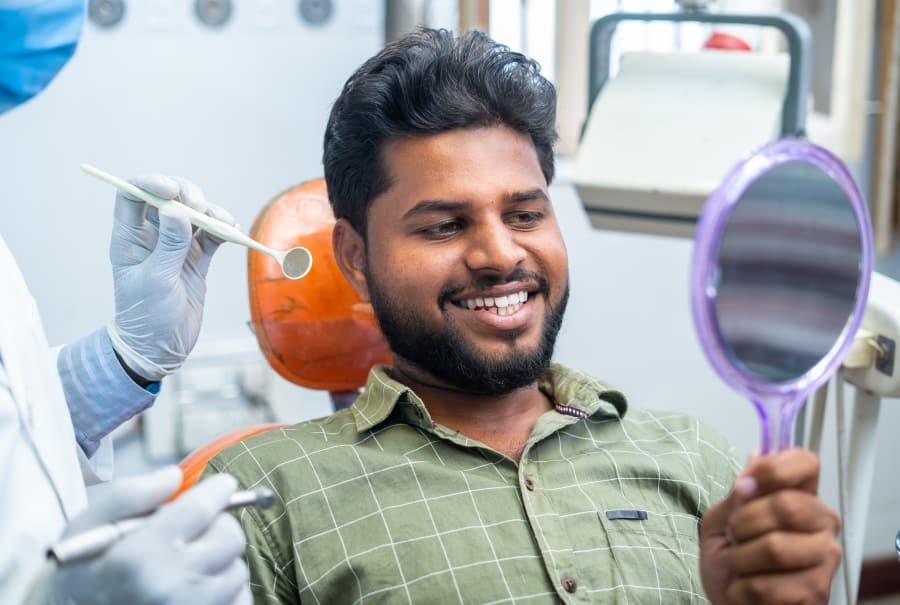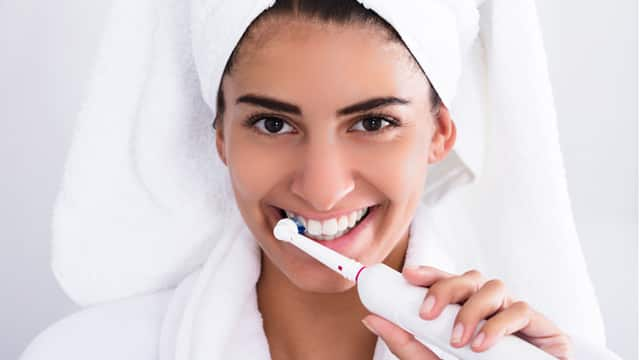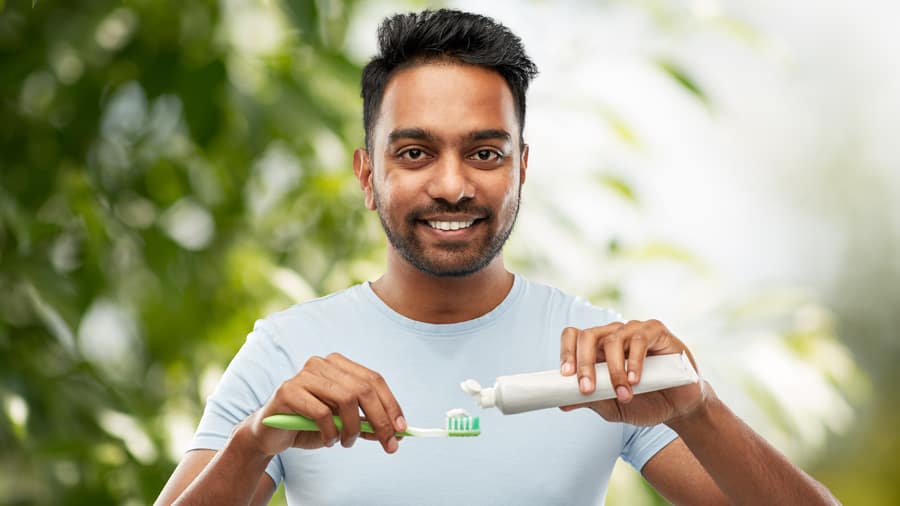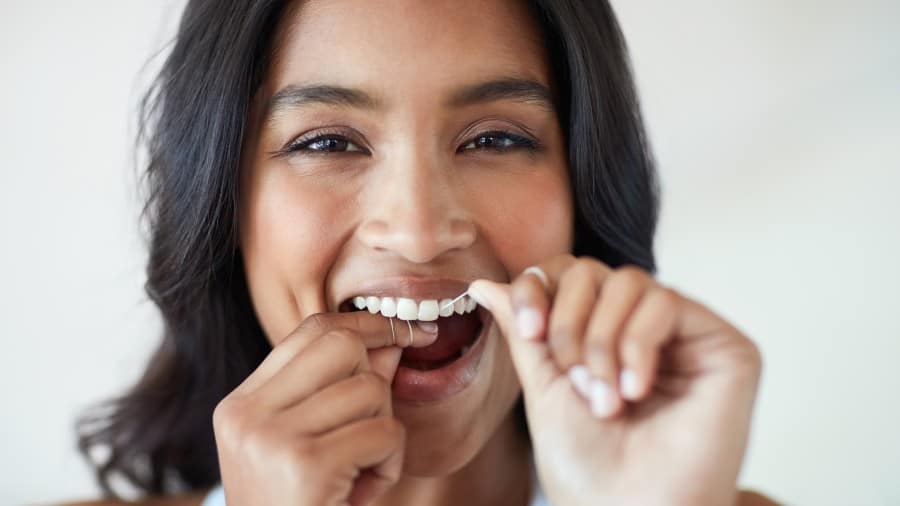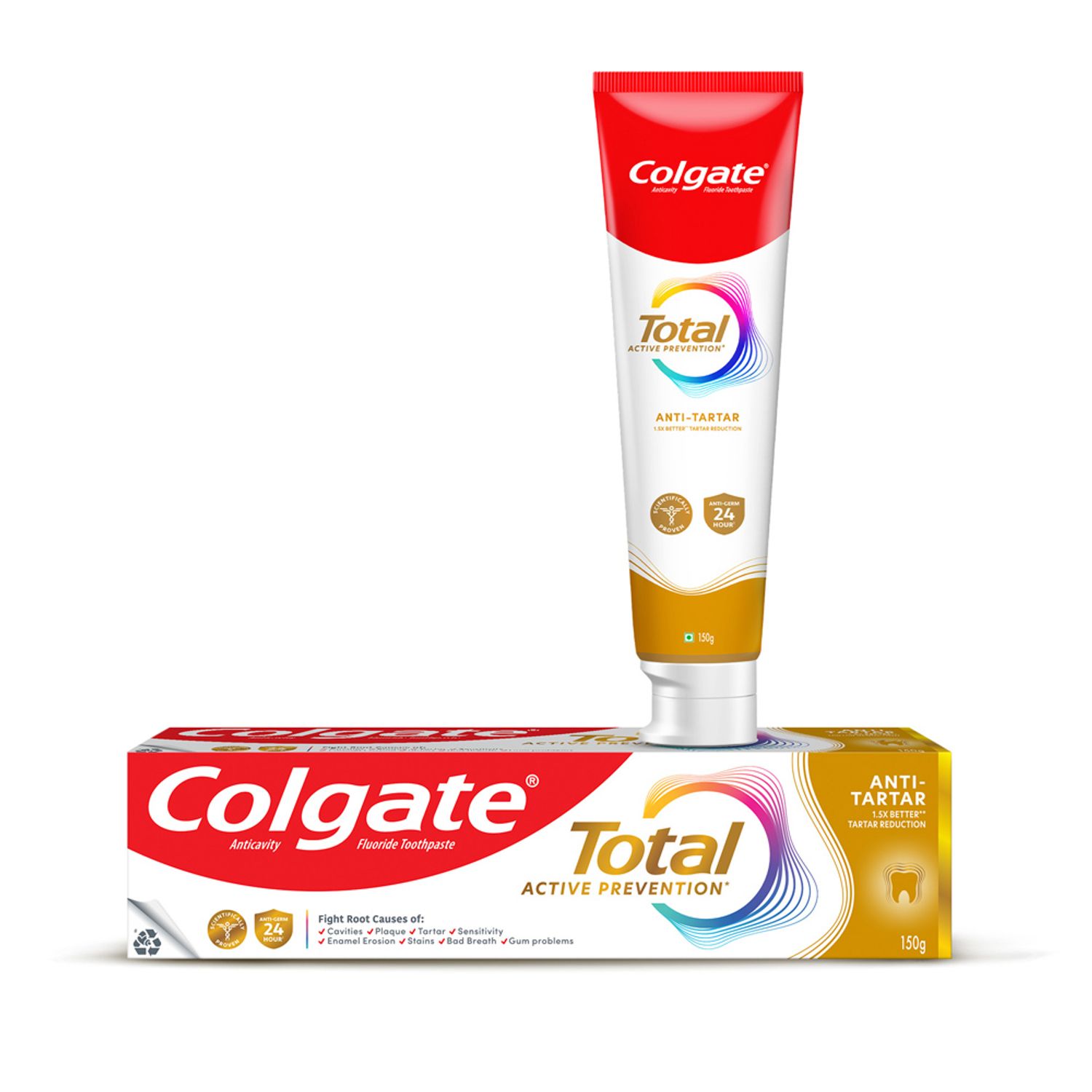What is Plaque?
The Indian Dental Association explains that dental plaque is a sticky film that constantly forms on teeth. Each time you eat or drink sugary food or drink, plaque accumulates on your teeth and can cause damage to your oral health. However, you can prevent plaque buildup with good oral hygiene practices and regular dental checkups. The bacteria in plaque feed on carbs and sugars, producing acid as they metabolise the sugars. The acids can damage your enamel and cause tooth decay. If this happens repeatedly, the tooth enamel can break down, leading to cavities. Dental plaque can cause gum disease like gingivitis or periodontitis as well.
Plaque can harden into dental calculus or tartar if not removed through regular brushing and flossing. This makes it even more difficult to keep your teeth clean, which can lead to more serious dental problems down the line. So, it's essential to maintain good dental hygiene and visit your dentist regularly for removing plaque from teeth, and to keep your teeth healthy and strong.
Prevent tooth problems by using the best preventive toothpaste for complete oral care.
What Causes Plaque On Teeth?
Plaque develops when bacteria in your mouth feed on sugary and starchy foods. If left untreated, plaque can develop under the gum, leading to the deterioration of the bone supporting the tooth. Therefore, failing to clean your teeth after eating or drinking allows plaque to form and later into tartar buildup, potentially causing dental issues. Learning how to clean teeth plaque properly is essential to prevent these dental problems.
How to Remove Plaque From Teeth?
Learning how to remove plaque from teeth effectively is crucial for maintaining oral health. Thoroughly cleaning all tooth surfaces, including those between your teeth helps eliminate food debris that feeds bacteria and contributes to plaque formation. Regular brushing and flossing are essential if you want to remove plaque at home.
However, if plaque has hardened into tartar, also known as calculus, you must visit your dental hygienist to learn more about tooth plaque removal, as normal brushing and flossing will not be effective.
Brushing Your Teeth
Brushing your teeth at least twice a day or after every meal is important. Brush for at least two minutes to prevent bacteria build-up and decay. Vigorous brushing techniques or applying excessive pressure for plaque removal from teeth are unnecessary. To effectively remove build-up and food debris, brushing teeth using a soft-bristled toothbrush and fluoride toothpaste is recommended.
For instance, Colgate Total Advanced Health toothpaste, with Dual Zinc and Arginine technology, fights germs on teeth, tongue, cheeks, and gums for 12 hours. Unlike regular toothpaste, it addresses overall oral health needs by removing plaque and tartar while preventing cavities and bad breath. It actively targets bacteria and contains Sodium fluoride 0.76% (0.10% w/v fluoride ion) which provides anticavity protection. Compared to a regular fluoride toothpaste after six months of use, Colgate Total demonstrably reduces plaque up to 34.4% and gingivitis up to 26.6%, with this plaque reduction being statistically superior.
It is important to note that bacteria thrive on sugar and carbohydrates found in sweets, soda, and snacks. Therefore, reducing the consumption of these foods and drinks, in addition to brushing and cleaning your teeth, is crucial to keeping plaque under control.
Floss, Flossers and Other Interdental Cleaners
Various products are available to effectively clean hard-to-reach places and remove plaque from teeth. These tools are specifically designed to eliminate food particles lodged between your teeth and the bacterial film that forms before it hardens into tartar. Unlike toothbrush bristles, which may struggle to reach these tight spaces effectively, these products are essential additions to your oral hygiene routine.
Traditional Dental Floss:
Can curve around your teeth to clean every side of each tooth
Helps reduce plaque buildup effectively
Water Flossers:
Use a water jet to clean between the teeth
Provide a convenient and effective way to remove plaque and food debris
Interdental Cleaners:
Can reach between the teeth if you have braces or another barrier to flossing with dental floss
Useful for cleaning hard-to-reach areas around orthodontic appliances
Regular use of dental floss, water flossers, and other interdental cleaners is crucial for maintaining good oral hygiene and preventing dental problems like gum disease, gingivitis, and tooth decay. Consult your dental hygienist for personalised medical advice on flossing products, or you can look for the IDA Seal of Acceptance for their approved products.
Practising Good Oral Hygiene
Maintaining excellent oral hygiene habits is crucial for preventing the buildup of plaque. Limiting sugary and acidic foods and beverages, which provide a breeding ground for bacteria, can reduce plaque formation. Regular dental cleanings further ensure the removal of hardened plaque (tartar) that brushing alone cannot eliminate, promoting overall oral health and preventing gum disease and tooth decay.
How to Prevent Plaque From Forming?
The Indian Dental Association notes that plaque is quicker to build up and can become more difficult to remove. Brushing and flossing daily, especially before bedtime and in the morning, are essential to remove plaque from teeth that build up while you sleep.
Now that you've learned about how bacteria build up on your teeth, remember to do the following to prevent tartar buildup:
Brush twice a day with fluoridated toothpaste and floss daily.
Limit sugary or starchy foods and drinks.
Rinse daily with an over-the-counter (OTC) or prescription antiseptic mouthwash.
Schedule regular dental checkups with your dental professional.
It is crucial to maintain proper oral hygiene to prevent the buildup of plaque, to ensure effective plaque removal, and to keep your mouth healthy. To prevent plaque buildup, you can brush your teeth, floss, and clean between your teeth regularly. Additionally, visiting your dental healthcare professional regularly, eating a healthy diet with less sugar, and avoiding tobacco products can all contribute to good dental health.
If you are seeking an answer for how to remove plaque from teeth, making these habits a part of your daily routine and being consistent, can help. It effectively prevents plaque buildup, maintains healthy teeth and gums, and helps in tartar control to keep your smile looking great for years to come. Remember, consistency in oral care practices is key to long-term dental wellness.
Frequently Asked Questions
How can I remove hardened plaque?
If the plaque has hardened into tartar, you need a professional dental cleaning from your dentist for tooth plaque removal. Brushing twice daily and flossing once daily can help remove plaque from teeth and prevent tartar from forming.
Can plaque be removed easily at home?
Use a soft bristle toothbrush and brush regularly with fluoridated toothpaste twice daily for 2 minutes. Use mouthwash and dental floss. However, if plaque hardens into tartar, you will need professional dental care for tartar removal.
Is plaque removal painful?
Plaque removal is generally painless, although some individuals might feel slight discomfort or sensitivity during the process if not done properly.
Does mouthwash remove plaque?
Mouthwash can help reduce plaque and gingivitis, fight tooth decay, and prevent cavities while freshening breath and improving overall oral health.
This article is intended to promote understanding of and knowledge about general oral health topics. It is not intended to be a substitute for professional advice, diagnosis or treatment. Always seek the advice of your dentist or other qualified healthcare provider with any questions you may have regarding a medical condition or treatment.
ORAL HEALTH QUIZ
What's behind your smile?
Take our Oral Health assessment to get the most from your oral care routine
ORAL HEALTH QUIZ
What's behind your smile?
Take our Oral Health assessment to get the most from your oral care routine





